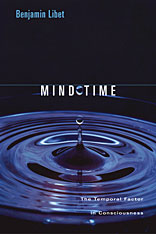Four Researchers Whose Work Sheds Light on the Reality of the Mind
The brain can be cut in half, but the intellect and will cannot, says Michael Egnor. The intellect and will are metaphysically simpleNeurosurgeon Michael Egnor was featured in a short film as a supplement to the Science Uprising series. There, he mentions four researchers who have shed light on the non-material mind nature of our minds:
Some of the earliest evidence came from neurosurgeon Wilder Penfield, who was the pioneer in epilepsy surgery in the mid 20th century. Penfield operated on over a thousand epilepsy patients while they were awake (under local anesthesia), and he stimulated their brains with electrodes in order to identify epileptic regions for surgical resection. He carefully recorded their responses to stimulation. In his book Mystery of the Mind, (1975) Penfield noted:
“When I have caused a conscious patient to move his hand by applying an electrode to the motor cortex of one hemisphere, I have often asked him about it. Invariably his response was: “I didn’t do that. You did”. When I caused him to vocalize, he said: “I didn’t make that sound. You pulled it out of me.” When I caused the record of the stream of consciousness to run again and so presented to him the record of his past experience, he marveled that he should be conscious of the past as well as of the present. He was astonished that it should come back to him so completely, with more detail than he could possibly recall voluntarily. He assumed at once that, somehow the surgeon was responsible for the phenomenon.”
Penfield never encountered a patient who, with stimulation of the brain, thought that he (the patient) had willed it. The patient could always distinguish between acts he willed himself and acts imposed on him by the surgeon’s electrode. My own experience (much more limited than that of Penfield, as I am not primarily an epilepsy neurosurgeon) has been the same. Patients can always distinguish evoked responses from voluntary willed responses.
Michael Egnor, “Neurosurgeon Wilder Penfield on Free Will” at Evolution News and Science Today:
Book: Mystery of the Mind: A Critical Study of Consciousness (1975)
The neuroscientist Roger Sperry studied scores of split-brain patients. He found, surprisingly, that in ordinary life the patients showed little effect. Each patient was still one person. The intellect and will – the capacity to have abstract thought and to choose – remained unified. Only by meticulous testing could Sperry find any differences: their perceptions were altered by the surgery. Sensations – elicited by touch or vision – could be presented to one hemisphere of the brain, and not be experienced in the other hemisphere. Speech production is associated with the left hemisphere of the brain; patients could not name an object presented to the right hemisphere (via the left visual field). Yet they could point to the object with their left hand (which is controlled by the right hemisphere). The most remarkable result of Sperry’s Nobel Prize-winning work was that the person’s intellect and will – what we might call the soul– remained undivided.
The brain can be cut in half, but the intellect and will cannot. The intellect and will are metaphysically simple.
Michael Egnor, “Science and the Soul” at The Plough
Book: Science and Moral Priority (1983)
Benjamin Libet (1916–2007). His focus was on free will:
Some of the most fascinating research on consciousness was done by Penfield’s contemporary Benjamin Libet at the University of California, San Francisco. Libet asked: What happens in the brain when we think? How are electrical signals in the brain related to our thoughts? He was particularly interested in the timing of brain waves and thoughts. Did a brain wave happen at the same moment as the thought, or before, or after?
It was a difficult question to answer. It wasn’t hard to measure electrical changes in the brain: that could be done routinely by electrodes on the scalp, and Libet enlisted neurosurgeons to allow him to record signals deep in the brain while patients were awake. The challenge Libet faced was to accurately measure the time interval between the signals and the thoughts. But the signals last only a few milliseconds, and how can you time a thought with that kind of accuracy?
Libet began by choosing a very simple thought: the decision to press a button. He modified an oscilloscope so that a dot circled the screen once each second, and when the subject decided to push the button, he or she noted the location of the dot at the time of the decision. Libet measured the timing of the decision and the timing of the brain waves of many volunteers with accuracy in the tens of milliseconds. Consistently he found that the conscious decision to push the button was preceded by about half a second by a brain wave, which he called the readiness potential. Then a half-second later the subject became aware of his decision. It appeared at first that the subjects were not free; their brains made the decision to move and they followed it.
But Libet looked deeper. He asked his subjects to veto their decision immediately after they made it—to not push the button. Again, the readiness potential appeared a half-second before conscious awareness of the decision to push the button, but Libet found that the veto—he called it “free won’t”—had no brain wave corresponding to it.
The brain, then, has activity that corresponds to a pre-conscious urge to do something. But we are free to veto or accept this urge. The motives are material. The veto, and implicitly the acceptance, is an immaterial act of the will.
Michael Egnor, “More Than Material Minds” at Christianity Today

Book: Mind Time: The Temporal Factor in Consciousness (2005)
In the past decade, British researcher Adrian Owen has found using fMRI imaging that some patients with such severe brain damage that they are considered to be in a persistent vegetative state are actually capable of sophisticated thought. The “comatose” patients’ brain scans show that, in reply to questions by an examiner, the patients are in fact thinking and imagining.
Michael Egnor, “A Map of the Soul” at First Things
Also by Michael Egnor on the immaterial mind:
Do “forced thinking” seizures show that abstract thought is a material thing? Michael Egnor: Epilepsy suppresses abstract thought, it does not evoke it
Do epileptic seizures cause abstract thoughts? A psychiatrist argues that “intellectual seizures” can occur. He is mistaken. Seizures never evoke abstract thought.
and
Atheist psychiatrist misunderstands the evidence for an immaterial mind. Patients with massive brain damage were shown to have a mental life.
